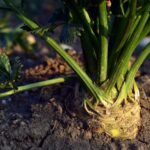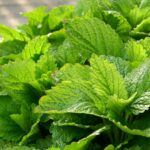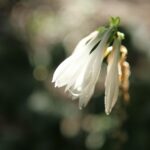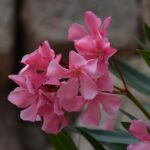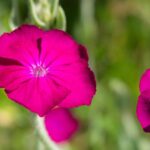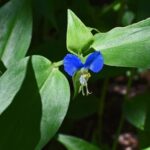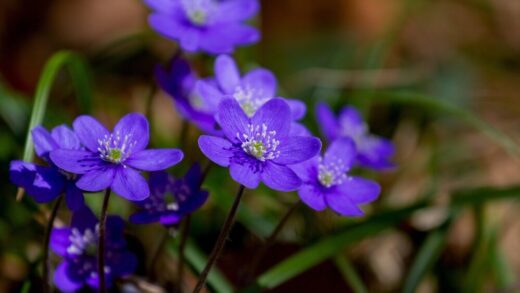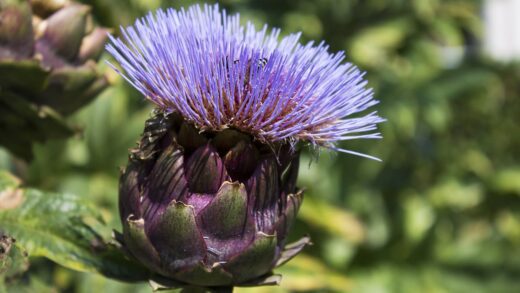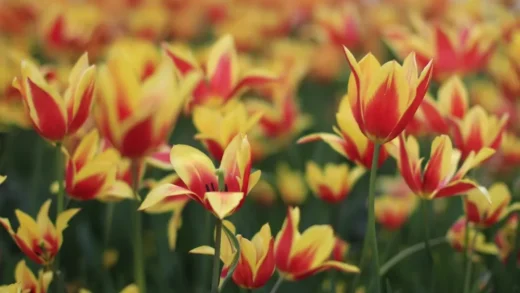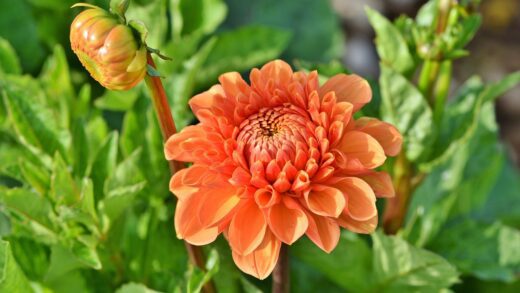Successfully establishing a black pine in your landscape begins long before the tree is placed in the ground; it starts with careful planning and an understanding of the species’ fundamental requirements. The process of planting is a critical moment in the life of the tree, as the techniques used can profoundly influence its ability to develop a strong root system and thrive for years to come. Equally fascinating is the art and science of propagation, the process of creating new trees from seed or through grafting, which allows gardeners to cultivate specific forms or simply experience the full life cycle of this magnificent conifer. This article provides a professional, in-depth guide to both planting and propagating the black pine, ensuring you have the knowledge to establish and multiply this resilient and beautiful tree with confidence.
Selecting the ideal planting site
The success of a black pine is overwhelmingly dictated by its location, making site selection the most critical preparatory step. This tree species has an absolute requirement for full sun, which translates to a minimum of six to eight hours of direct, unfiltered sunlight each day. A location that is shaded for a significant portion of the day will result in a tree that is sparse, leggy, and weak, as it struggles to photosynthesize effectively. When evaluating potential sites, consider the sun’s trajectory throughout the day and year, and be mindful of future growth from surrounding trees or new buildings that could eventually cast a shadow.
Equally as important as sunlight is the quality of the soil drainage. Black pines are notoriously intolerant of waterlogged conditions, which deprive their roots of oxygen and inevitably lead to root rot. To test the drainage of a potential site, dig a hole approximately 30 centimeters deep and fill it with water. If the water has not drained away within 12 hours, the site has poor drainage and is unsuitable for a black pine without significant modification. Ideal locations are on slopes or in sandy or loamy soils that allow water to pass through freely, mimicking the tree’s native habitat on rocky hillsides.
Beyond sun and drainage, you must consider the spatial requirements for a mature black pine. These trees can grow quite large, reaching significant heights and spreads depending on the specific cultivar. It is essential to plant them a safe distance from homes, utility lines, driveways, and property lines to prevent future conflicts. Envision the tree at its mature size and ensure it will have ample room to grow without interference. This foresight prevents the need for difficult and potentially damaging pruning in the future and allows the tree to develop its natural, majestic form.
Finally, take into account the local microclimate and environmental conditions. The black pine is celebrated for its tolerance to salt spray and urban pollution, making it an excellent candidate for coastal areas or city landscapes where other conifers might struggle. However, it is less tolerant of extremely humid climates, which can promote fungal diseases. Choosing a site with good air circulation can help mitigate this risk. By carefully considering all these factors—sunlight, drainage, space, and local environment—you create the perfect foundation for a healthy and long-lived black pine.
More articles on this topic
The optimal planting process
The best time to plant a new black pine is during the dormant season, either in the early spring after the ground has thawed or in the autumn before it freezes. Planting during these cooler periods minimizes transplant shock and allows the tree to begin establishing its root system before the stresses of summer heat or deep winter cold set in. Avoid planting in the middle of a hot summer, as the combination of heat and transplant stress can be too much for the young tree to overcome. Preparing the planting site in advance will ensure the process is smooth and efficient.
When you are ready to plant, dig a hole that is two to three times wider than the root ball of the tree but no deeper. It is critically important that the tree is not planted too deep. The point where the trunk begins to flare out into the roots, known as the root flare, should be visible at or slightly above the soil level after planting. To check the depth, you can lay a shovel handle across the hole. Planting too deep is one of the most common and fatal errors in tree planting, as it can lead to bark decay at the soil line and the eventual girdling and death of the tree.
Carefully remove the tree from its container or burlap wrapping, being gentle with the root ball to minimize disturbance. If the tree is pot-bound, meaning the roots are circling densely around the inside of the container, it is important to gently tease them apart or make a few vertical cuts through the outer layer of roots with a sharp knife. This encourages the roots to grow outward into the surrounding soil rather than continuing to circle and potentially girdle the tree. Place the tree in the center of the hole, ensuring it is straight from all angles.
Once the tree is positioned correctly, backfill the hole with the native soil that was removed. There is no need to add copious amounts of amendments like peat moss or compost directly into the planting hole, as this can create a “container effect” that discourages roots from penetrating the surrounding soil. Firm the soil gently around the root ball to eliminate large air pockets, but do not compact it heavily. After backfilling, create a shallow berm or ring of soil around the edge of the planting hole to help retain water and direct it to the root ball. Water the newly planted tree thoroughly and deeply.
More articles on this topic
Post-planting care for young trees
Immediately after planting, one of the most beneficial actions you can take is to apply a layer of organic mulch around the base of the new black pine. A 5 to 10-centimeter layer of pine bark, wood chips, or pine needles spread over the root zone will provide numerous benefits. Mulch helps to conserve soil moisture, suppress the growth of competing weeds, and regulate soil temperature, protecting the new roots from extreme heat and cold. Crucially, ensure that the mulch is pulled back a few centimeters from the trunk itself to prevent moisture from accumulating against the bark, which can lead to decay.
Consistent watering is paramount during the first few growing seasons until the tree becomes fully established. A newly planted black pine lacks the extensive root system needed to find water on its own, especially during dry periods. For the first year, provide a deep and thorough soaking once a week unless there has been significant rainfall. It is far better to water deeply and infrequently than to provide shallow, frequent waterings. Deep watering encourages the roots to grow deeper into the soil profile, which is essential for developing drought tolerance and long-term stability.
Protecting the young tree from physical damage is also a critical aspect of post-planting care. The thin bark of a sapling is easily damaged by lawnmowers and string trimmers, creating wounds that can be entry points for pests and diseases. Maintaining a wide, mulched ring around the tree eliminates the need to mow or trim close to the trunk. In areas with high populations of deer or rabbits, you may also need to install a temporary protective tube or fence around the trunk to prevent them from browsing on the foliage or rubbing their antlers against the bark.
Finally, resist the urge to fertilize a newly planted tree. The priority for a young pine is to expend its energy on developing a strong root system, not on producing lush top growth. Most soils have sufficient nutrients to support the tree during its establishment phase. Adding fertilizer at the time of planting can burn the sensitive new roots and may encourage excessive foliage growth before the root system is capable of supporting it. It is best to wait at least one full growing season before considering any supplemental fertilization, and even then, it should only be done if a need is clearly identified.
Propagation from seed
Propagating black pine from seed is a rewarding process that allows you to witness the entire life cycle of the tree, although it requires patience. The first step is to acquire viable seeds, which can be harvested from mature pine cones in the autumn. Collect cones that have begun to open but have not yet released all their seeds. You can encourage them to open further by placing them in a warm, dry location. Once the cones are open, the seeds can be shaken out; the small “wing” attached to each seed can be removed by gently rubbing them.
Pine seeds have a natural dormancy that must be broken before they will germinate, a process that mimics the natural winter cold period. This is achieved through a process called cold, moist stratification. To do this, mix the seeds with a lightly dampened medium such as peat moss, sand, or vermiculite. Place this mixture in a sealed plastic bag or container and store it in a refrigerator at a temperature of around 1-5°C for a period of 60 to 90 days. It is important to check the seeds periodically to ensure the medium remains moist but not waterlogged.
After the stratification period is complete, the seeds are ready for sowing. Prepare a seed tray or small pots with a well-draining seed-starting mix, which typically consists of peat moss, perlite, and vermiculite. Sow the seeds on the surface of the mix and cover them lightly with a thin layer of soil or sand, no deeper than the thickness of the seed itself. Gently water the tray and place it in a location that receives bright, indirect light. Keep the soil consistently moist but not saturated as the seeds germinate.
Germination can take several weeks to a few months, depending on the conditions. Once the seedlings have emerged and developed their first true needles, they will need ample light and good air circulation to prevent fungal diseases like damping-off. You can gradually acclimate them to more direct sunlight. The seedlings can be transplanted into individual, deeper pots once they are large enough to handle. They should be grown in these pots for at least one to two years, allowing them to develop a robust root system before they are ready to be planted out in their final landscape location.
Propagation through grafting
Grafting is an advanced propagation technique used to create a genetically identical copy, or clone, of a parent plant. This method is particularly valuable for propagating specific cultivars of black pine that have desirable characteristics, such as a weeping habit, dwarf size, or unique needle color, which would not come true from seed. The process involves joining a piece of the desired cultivar (the scion) onto the root system of a common, hardy black pine seedling (the rootstock). This ensures the resulting tree has both the desired ornamental traits and a vigorous root system.
The timing and materials for grafting are critical to success. The most common time to graft conifers is in late winter, typically from December to February, when both the scion and rootstock are fully dormant. Scion wood should be collected from the previous season’s growth from a healthy, vigorous parent tree. The rootstock should be a healthy, well-established seedling, usually two to three years old, that has been potted for at least a season. The diameter of the scion should closely match the diameter of the rootstock at the point where the graft will be made.
The most common type of graft used for pines is the side-veneer graft. This involves making a long, shallow downward cut into the side of the rootstock, with a shorter inward cut at the base to remove a sliver of wood. The scion is then prepared by making a long, matching wedge-shaped cut on one side of its base. The prepared scion is inserted into the cut on the rootstock, carefully aligning the cambium layers—the thin green layer just under the bark—on at least one side. The alignment of the cambium is essential, as this is where the vascular tissues will fuse together.
Once the scion is in place, the graft union must be securely wrapped with a grafting rubber or tape to hold the pieces together and ensure good contact. The entire union is then often coated with grafting wax to prevent it from drying out and to protect it from moisture and pathogens. The newly grafted plants must be kept in a controlled environment, such as a greenhouse or a cold frame, where humidity is high and temperatures are cool but stable. It takes several weeks or months for the graft union to heal, a process known as callusing. Once the scion shows strong signs of new growth, the top of the rootstock above the graft union can be gradually pruned away.








